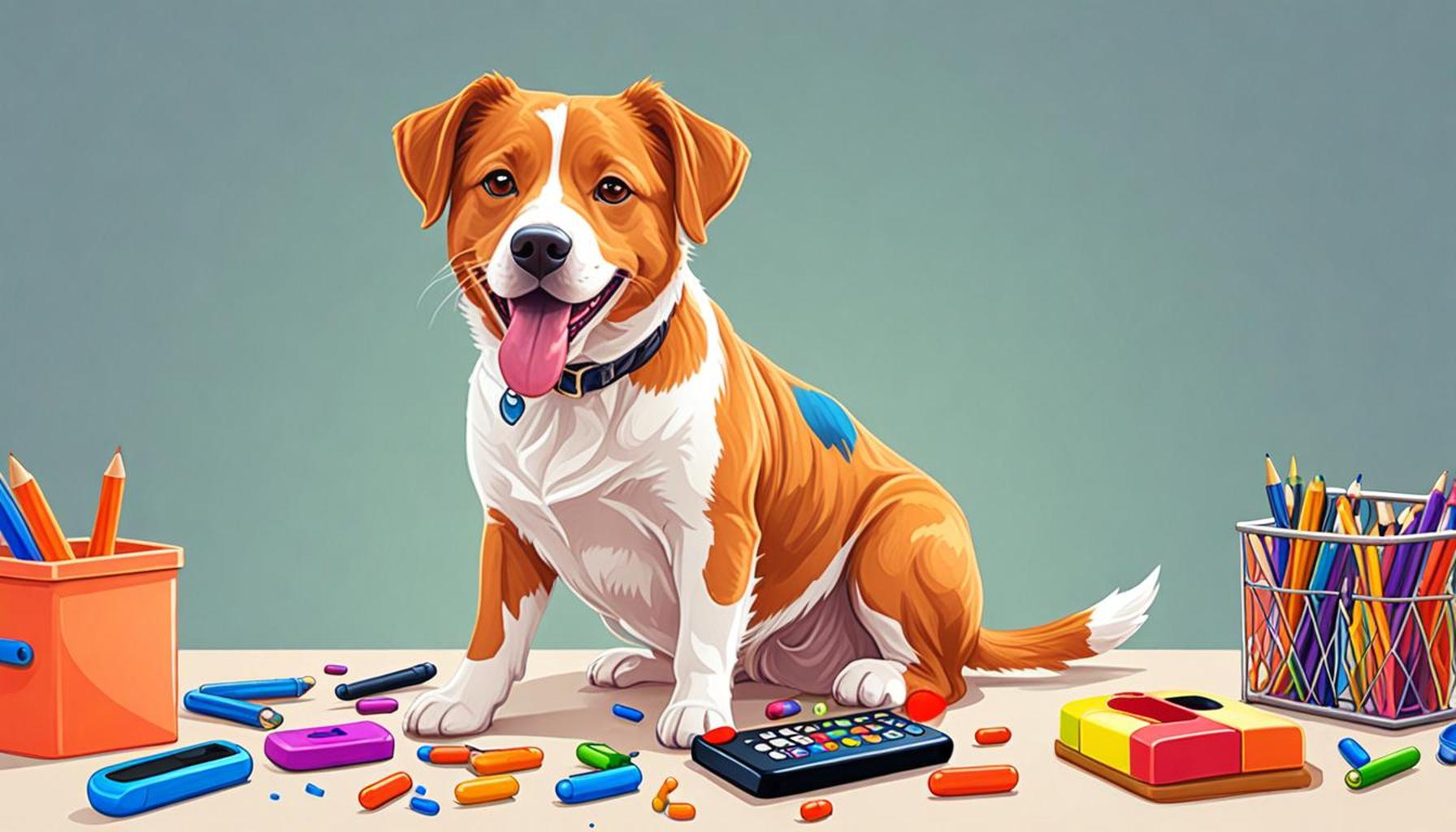Training for Socialization: Preparing Your Pet for Interactions with Other Animals and People

Understanding the Importance of Socialization
Socialization is a crucial aspect of pet training that often gets overlooked. Proper socialization prepares your pet for positive interactions with both other animals and people. These experiences can significantly influence their behavior and overall happiness in a variety of environments, from busy parks to family gatherings.
Why Socialization Matters
When pets are adequately socialized, they are more likely to:
- Become well-adjusted: A socially trained pet exhibits less fear and demonstrates increased confidence in new situations. For example, a dog that has been exposed to different types of people and environments is less likely to react anxiously when encountering a diverse crowd on a busy street.
- Avoid aggression: Proper interactions with various animals and humans can help prevent aggressive behaviors. For instance, cats that are socialized with dogs during their early developmental stages tend to be less territorial and more accepting of canine companions.
- Enhance life quality: Social pets often lead happier lives and engage better in their environments. Imagine a dog that eagerly greets guests instead of hiding under the coffee table; such a pet enjoys playdates and outings, enriching both its life and that of its owner.
Key Moments for Socialization
The critical windows for pet socialization occur during specific developmental stages, making it essential to take advantage of these moments:
- Puppies (3 to 14 weeks old) – This is when they are most receptive to new experiences. Introducing puppies to various sights, sounds, and smells during this window is crucial. Visits to parks, pet-friendly stores, or even puppy classes can set them up for success.
- Kittens (2 to 9 weeks old) – Early exposure can significantly shape their personalities. Kittens benefit from meeting different people, handling, and even interacting with other pets to foster a well-balanced temperament.
- Adult pets – It’s never too late to socialize an older animal; however, it may require more patience and gradual exposure. Engaging a dog in structured activities, such as obedience classes or group play sessions with other friendly dogs, can facilitate their reintegration into social settings.
Investing time in training for socialization not only leads to a well-behaved pet but also enriches the bond between you and your furry friend. The process can be as simple as introducing them to the neighborhood pets or as structured as attending dog training camps. As you delve deeper into socialization techniques, you will uncover effective strategies to ensure your pet thrives in various social settings, offering them a fulfilling and secure life. The more proactive you are in this regard, the better equipped your pet will be to navigate the world around them, making socialization an essential aspect of pet care.
DIVE DEEPER: Click here to learn about the benefits and risks of homemade pet diets</a
Effective Strategies for Socialization Training
When it comes to training for socialization, understanding effective strategies can make all the difference in how your pet experiences their interactions with others. Socialization is not just about meeting new friends; it is an ongoing practice that creates a solid foundation for your pet’s life. Here are some practical techniques to ensure successful outcomes.
Gradual Exposure to Diverse Environments
One of the most effective strategies in socialization is gradual exposure. This involves introducing your pet to a variety of environments, experiences, and stimuli at a pace that is comfortable for them. Consider these steps:
- Start Small: Begin in familiar surroundings where your pet feels safe. This might be your backyard or a quiet corner of a local park. Gradually introduce more complex settings such as busy streets or pet-friendly stores.
- Use Positive Reinforcement: Reward your pet with treats or praise when they exhibit calm behavior in new environments. This reinforcement encourages them to associate new experiences with positivity.
- Observe Body Language: Pay close attention to your pet’s body language. Signs of anxiety include tail tucking, cowering, or excessive barking. If your pet shows signs of stress, take a step back and allow them to acclimate at their own pace.
Interactions with Other Animals
Meeting other animals can be a daunting task for many pets. To foster confident interactions, consider these tips:
- Controlled Playdates: Schedule controlled playdates with other friendly pets. This setup allows your pet to engage in play while under your supervision, reducing the guilt of potential conflicts.
- Dog Parks vs. Quiet Walks: While dog parks provide ample opportunity for socialization, they can be overwhelming for some pets. Begin with quieter walks where they can meet one or two other animals before progressing to busier parks.
- Behavioral Training Classes: Enrollment in group classes can provide structured environments for socialization. Professional trainers can guide interactions and ensure safety for all pets involved.
Building Comfort with People
Alongside interactions with other animals, becoming accustomed to various types of people is essential. Here’s how to approach this aspect of socialization:
- Invite Friends Over: Having friends with varied appearances and ages visit can help your pet become accustomed to strangers. Ensure that your friends understand how to approach your pet gently.
- Attend Local Events: Participating in community events can expose your pet to new people in a less controlled environment. Whether it’s a pet fair or an outdoor concert, these exposures can help normalize interactions.
- Practice Calm Greetings: Teach your pet to remain calm during greetings. This can be done by practicing “sit” or “stay” commands as new people approach, creating a more positive interaction.
Understanding and implementing these strategies is vital in the preparatory journey of socializing your pet. It not only encourages appropriate behavior in a variety of situations but also builds confidence and ensures a happier life for your furry companion. As you continue to explore socialization techniques, you will discover the many facets that make for a well-adjusted and sociable pet.
Training your pet for successful socialization is crucial for their overall well-being and happiness. It enables them to engage positively with other animals and people, reducing anxiety and behavioral issues. Here are some additional points to consider when training your pet:
Understanding Body Language
One key aspect of socialization is teaching your pet to read and respond to body language, both theirs and that of others. Different animals and people have unique ways of expressing discomfort, excitement, or aggression. Training your pet to recognize these signals can prevent potential conflicts and encourage friendly interactions.
Positive Reinforcement
Utilizing positive reinforcement techniques during training helps build trust between you and your pet. When they exhibit desired behaviors—such as remaining calm around other animals or people—reward them with treats or praise. This method ensures a more enjoyable training experience and promotes good behavior.
Implementation of Controlled Environments
Simulating controlled situations where your pet interacts with other animals and people can be incredibly beneficial. Begin with familiar settings and gradually introduce more distractions to help them acclimate. For example, attending socialization classes can offer structured environments to practice interactions with others, enhancing your pet’s confidence.
| Category | Benefits |
|---|---|
| Understanding Body Language | Enhances pet’s ability to interact safely and confidently. |
| Positive Reinforcement | Builds trust and encourages desired behaviors. |
| Controlled Environments | Allows safe practice of social skills and boosts confidence. |
Continuously engaging your pet in socializing exercises lays the foundation for better interactions, which not only enriches their life but also minimizes the stress for both owners and other pets involved. Grant them the tools they need for flourishing friendships in a world full of new experiences.
DON’T MISS: Click here for essential tips on positive training
Creating a Positive Socialization Framework
Establishing a positive framework for your pet’s socialization journey can significantly influence their behavior and comfort level during interactions. While implementing effective techniques is crucial, creating a supportive atmosphere plays an equally pivotal role. Here are some additional strategies to enhance your pet’s socialization experience.
Implementing Routine Exposure
Routine exposure is a key element that contributes to a pet’s adaptability. By incorporating socialization activities into your pet’s regular schedule, you normalize interactions and decrease anxiety:
- Daily Walks: Incorporate daily walks in various environments. Each outing can introduce your pet to different sounds, sights, and scents, building their familiarity with the outside world.
- Scheduled Meet-and-Greets: Create a calendar for regular encounters with different people and animals. This ritualistic approach aids in building consistency and comfort in social situations.
- Use of Crates: For pets that may feel overwhelmed in social environments, utilizing crates or designated safe zones during gatherings can provide a retreat while still allowing them to observe interactions.
Utilizing Socialization Aids
Various tools and aids can assist in your socialization efforts. These aids can entice your pet and make interactions less intimidating:
- Interactive Toys: Bring along favorite toys during social settings. Engaging with toys can distract your pet, reduce anxiety, and foster a playful atmosphere.
- Socialization Classes: Joining formal socialization classes or group training sessions can be invaluable. This structured approach allows your pet to learn alongside others while being monitored by professionals who can guide the process.
- Calming Products: Consider utilizing products like calming collars or supplements to ease anxiety during challenging interactions. These can create a sense of tranquility in high-stress environments.
Promoting Desensitization
Desensitization is a gradual process that helps your pet become familiar with sounds, sights, and situations that may trigger anxiety or fear. Here’s how to implement desensitization techniques:
- Sound Training: Use recordings of common sounds—like doorbells, thunderstorms, or other animals—to expose your pet gradually. Begin at a low volume and reward your pet for calm behavior.
- Visual Exposure: Safely expose your pet to a variety of sights, namely bicycles, small children, or unfamiliar animals. Controlled exposures can heighten their confidence as they encounter new things.
- Incremental Approach: Increase exposure to novel stimuli slowly, allowing your pet to acclimate without overwhelming them. Short, positive experiences build trust and resilience.
Engaging in Positive Reinforcement
At the heart of socialization training is the principle of positive reinforcement, which reinforces desirable behavior through rewards:
- Consistent Rewards: Use treats, praise, or affection to reward calm behavior during interactions. Ensure your pet understands that good behavior yields positive outcomes.
- Game with Commands: Turn commands such as “sit” or “wait” into fun games during social interactions. This adds an element of play to the experience, reinforcing good behavior with enjoyment.
- Use Scent Familiarization: All animals communicate through their sense of smell. Allow your pet to sniff various objects or engage with other pets carefully. This can reduce uncertainty and promote a sense of curiosity.
Incorporating these strategies into your routine can significantly improve your pet’s social skills. A strong foundation of trust and comfort paves the way for enriching experiences, allowing your furry companion to thrive in an ever-changing world. Remember, consistent, patient, and positive approaches will transform socialization from a daunting task into a delightful adventure for both you and your pet.
DISCOVER MORE: Click here for essential pet safety tips
Conclusion: The Path to Confident Companions
In conclusion, training for socialization is a vital aspect of pet ownership that extends beyond mere obedience. By instilling a set of principles and practices into your pet’s daily life, you create an enriching environment that enhances their comfort and confidence during interactions with both people and other animals. Through methods like routine exposure, structured socialization activities, and positive reinforcement, you lay the groundwork for well-rounded behavior that not only keeps your pet happy but also fosters positive relationships within the community.
As you embark on this journey with your furry companion, remember that patience is key. Socialization is not a one-time event but an ongoing process that evolves as your pet grows. The goal is to help them navigate and embrace the world around them, minimizing the chances of behavioral issues stemming from fear or anxiety. By utilizing tools like socialization classes and calming aids, pet owners can greatly enhance their efforts, transforming potentially overwhelming situations into enjoyable and rewarding experiences.
Ultimately, the journey of socialization enriches not just your pet’s life, but yours as well. A well-socialized pet opens the door to new friendships, adventures, and shared moments that enrich your bond. With commitment and love, you can cultivate a remarkable companionship where both of you thrive, reminding us that socialization is the heart of a harmonious life with our beloved animals. As you continue to explore and apply these strategies, you’ll uncover the joy of watching your companion flourish in today’s diverse world.



